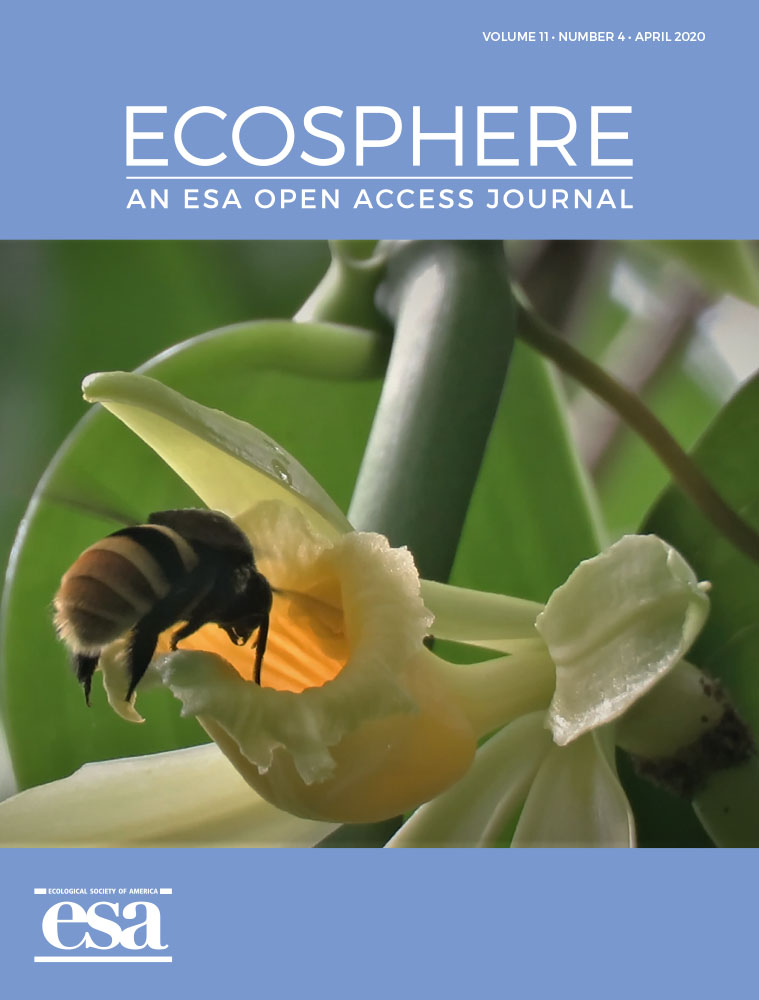Ver ítem
- xmlui.general.dspace_homeCentros Regionales y EEAsCentro Regional Patagonia NorteEEA BarilocheArtículos científicosxmlui.ArtifactBrowser.ItemViewer.trail
- Inicio
- Centros Regionales y EEAs
- Centro Regional Patagonia Norte
- EEA Bariloche
- Artículos científicos
- Ver ítem
Agroecosystem patterns and land management co-develop through environment, management, and land-use interactions
Resumen
A poor understanding of the interactions between biophysical and social elements within rural mountainous landscapes can lead to suboptimal management and recommendations. The objective of this study was to contribute to more contextualized natural resource management in a rural landscape in the Ecuadorian Andes by (1) identifying biophysical patterns in soil properties, biodiversity, and C stocks that emerge from natural landscape pedogenic processes,
[ver mas...]
A poor understanding of the interactions between biophysical and social elements within rural mountainous landscapes can lead to suboptimal management and recommendations. The objective of this study was to contribute to more contextualized natural resource management in a rural landscape in the Ecuadorian Andes by (1) identifying biophysical patterns in soil properties, biodiversity, and C stocks that emerge from natural landscape pedogenic processes, resulting from elevation-induced climate gradients, erosion and soil textural patterns, and (2) assessing farm management and land-use effects on and their interactions with these biophysical patterns. Our findings revealed that the climate and soil texture gradients within the landscape led to an exponential increase in SOC with elevation moderated by slope gradient, indicating significant erosion processes. Farmers adapted their farm management according to the observed environmental patterns creating three distinct management zones. Differentiated agricultural management in these zones and asymmetrical distribution of land-uses in turn were observed to significantly influence soil and agroecosystem properties. For example, available P was found to be significantly higher in the upper and middle agricultural management zones (24.0 and 28.7 mg/kg, respectively), where agricultural inputs were higher compared to the lower agricultural management zone (8.9 mg/kg,
P < 0.001). Mixed hedgerows, on the other hand, displayed significantly higher Shannon index scores for ground vegetation (1.8) and soil macrofauna (2.0) compared to agricultural land-uses (1.0 and 1.7). Our results provide important insights into how agroecosystem patterns and land management co-developed through complex environment, management, and land-use interactions.
[Cerrar]

Autor
Caulfield, Mark E.;
Fonte, Steven J.;
Groot, Jeroen C.J.;
Vanek, Steven J.;
Sherwood, Stephen;
Oyarzun, Pedro;
Borja, Ross Mary;
Dumble, Sam;
Tittonell, Pablo Adrian;
Fuente
Ecosphere 11 (4) : Art: e03113 (Abril 2020)
Fecha
2020-04
Editorial
Wiley
ISSN
2150-8925
Formato
pdf
Tipo de documento
artículo
Palabras Claves
Derechos de acceso
Abierto
 Excepto donde se diga explicitamente, este item se publica bajo la siguiente descripción: Creative Commons Attribution-NonCommercial-ShareAlike 2.5 Unported (CC BY-NC-SA 2.5)
Excepto donde se diga explicitamente, este item se publica bajo la siguiente descripción: Creative Commons Attribution-NonCommercial-ShareAlike 2.5 Unported (CC BY-NC-SA 2.5)


